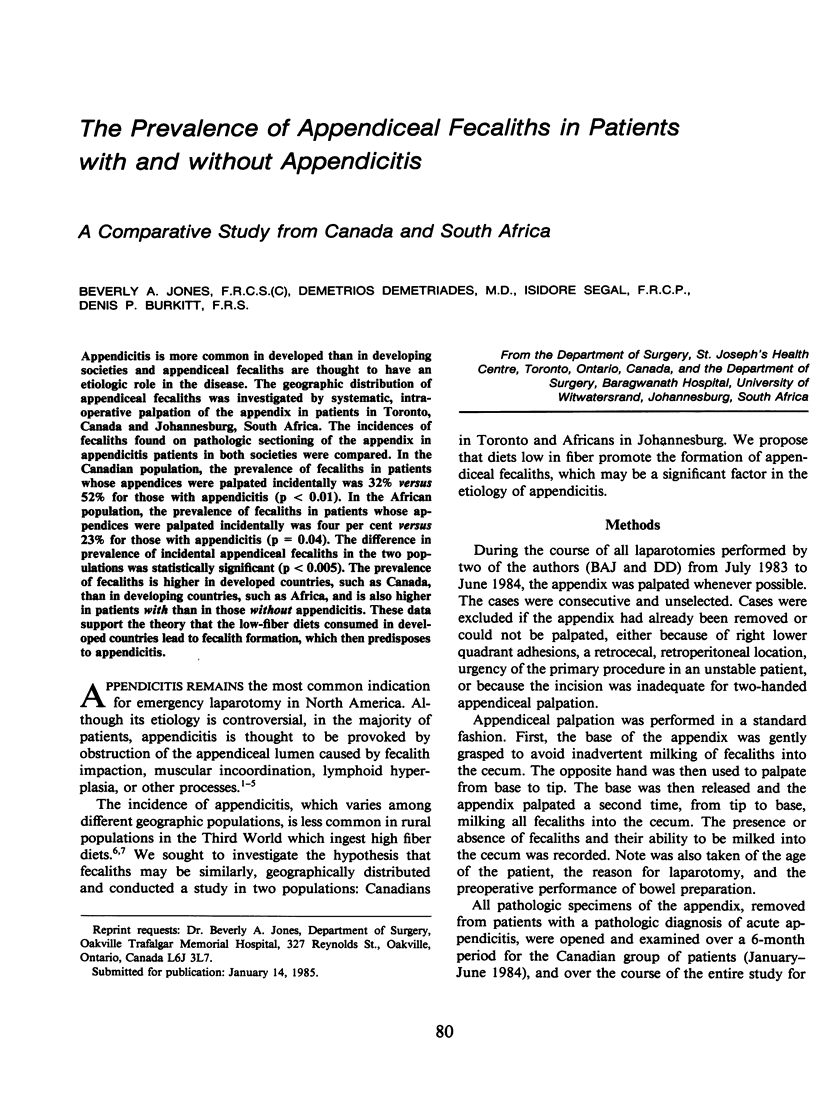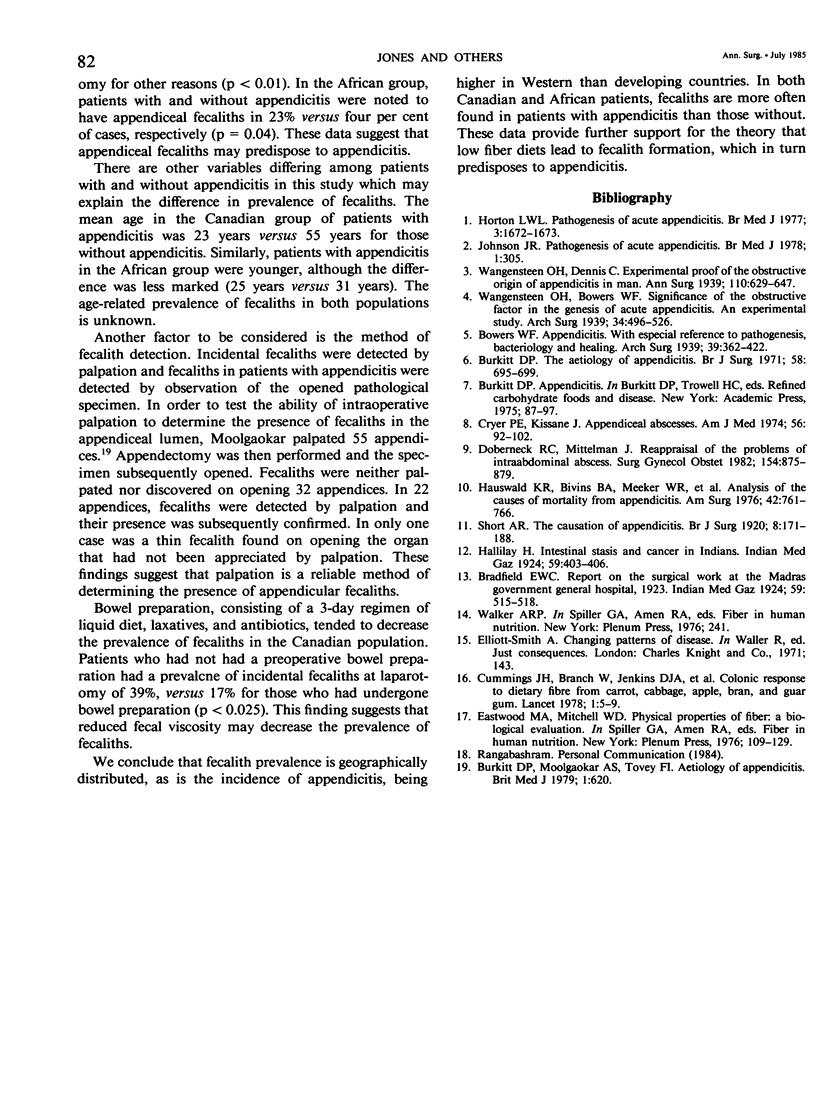Abstract
Appendicitis is more common in developed than in developing societies and appendiceal fecaliths are thought to have an etiologic role in the disease. The geographic distribution of appendiceal fecaliths was investigated by systematic, intraoperative palpation of the appendix in patients in Toronto, Canada and Johannesburg, South Africa. The incidences of fecaliths found on pathologic sectioning of the appendix in appendicitis patients in both societies were compared. In the Canadian population, the prevalence of fecaliths in patients whose appendices were palpated incidentally was 32% versus 52% for those with appendicitis (p less than 0.01). In the African population, the prevalence of fecaliths in patients whose appendices were palpated incidentally was four per cent versus 23% for those with appendicitis (p = 0.04). The difference in prevalence of incidental appendiceal fecaliths in the two populations was statistically significant (p less than 0.005). The prevalence of fecaliths is higher in developed countries, such as Canada, than in developing countries, such as Africa, and is also higher in patients with than in those without appendicitis. These data support the theory that the low-fiber diets consumed in developed countries lead to fecalith formation, which then predisposes to appendicitis.
Full text
PDF


Selected References
These references are in PubMed. This may not be the complete list of references from this article.
- Burkitt D. P., Moolgaokar A. S., Tovey F. I. Aetiology of appendicitis. Br Med J. 1979 Mar 3;1(6163):620–620. doi: 10.1136/bmj.1.6163.620. [DOI] [PMC free article] [PubMed] [Google Scholar]
- Burkitt D. P. The aetiology of appendicitis. Br J Surg. 1971 Sep;58(9):695–699. doi: 10.1002/bjs.1800580916. [DOI] [PubMed] [Google Scholar]
- Clinicopathologic conference: Appendiceal abscess. Am J Med. 1974 Jan;56(1):92–102. [PubMed] [Google Scholar]
- Cummings J. H., Branch W., Jenkins D. J., Southgate D. A., Houston H., James W. P. Colonic response to dietary fibre from carrot, cabbage, apple, bran. Lancet. 1978 Jan 7;1(8054):5–9. doi: 10.1016/s0140-6736(78)90357-4. [DOI] [PubMed] [Google Scholar]
- Doberneck R. C., Mittelman J. Reappraisal of the problems of intra-abdominal abscess. Surg Gynecol Obstet. 1982 Jun;154(6):875–879. [PubMed] [Google Scholar]
- Hauswald K. R., Bivins B. A., Meeker W. R., Jr, Griffen W. O., Jr Analysis of the causes of mortality from appendicitis. Am Surg. 1976 Oct;42(10):761–766. [PubMed] [Google Scholar]
- Horton L. W. Pathogenesis of acute appendicitis. Br Med J. 1977 Dec 24;2(6103):1672–1673. doi: 10.1136/bmj.2.6103.1672-b. [DOI] [PMC free article] [PubMed] [Google Scholar]
- Johnson J. R. Pathogenesis of acute appendicitis. Br Med J. 1978 Feb 4;1(6108):305–305. doi: 10.1136/bmj.1.6108.305-c. [DOI] [PMC free article] [PubMed] [Google Scholar]
- Wangensteen O. H., Dennis C. EXPERIMENTAL PROOF OF THE OBSTRUCTIVE ORIGIN OF APPENDICITIS IN MAN. Ann Surg. 1939 Oct;110(4):629–647. doi: 10.1097/00000658-193910000-00011. [DOI] [PMC free article] [PubMed] [Google Scholar]


